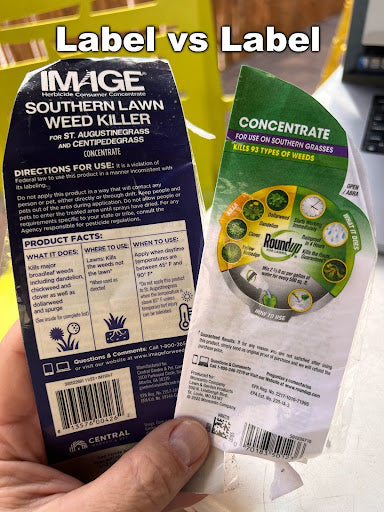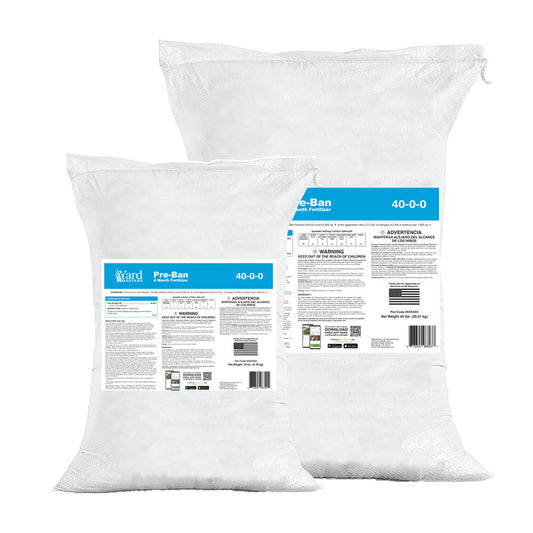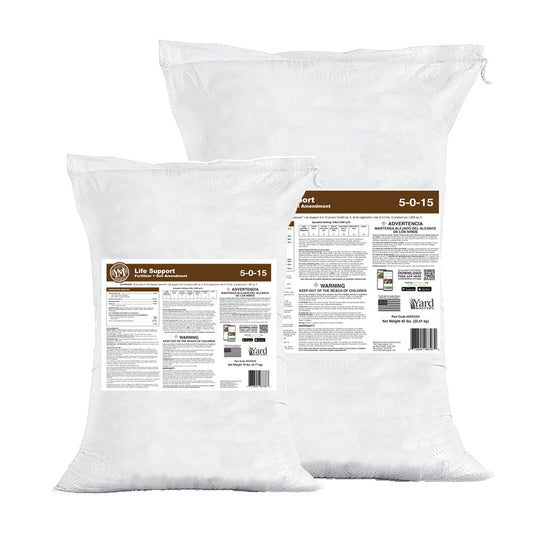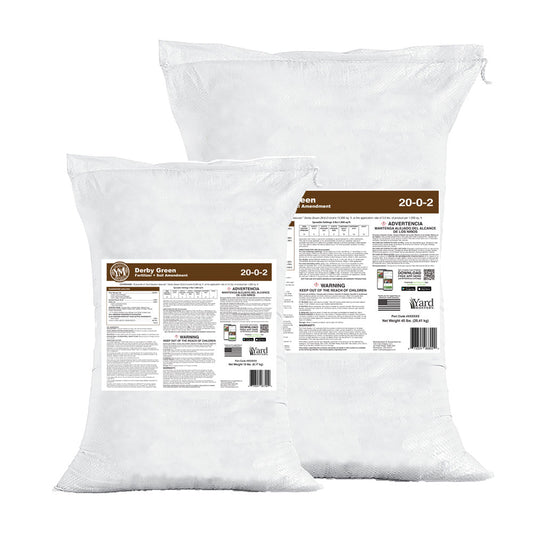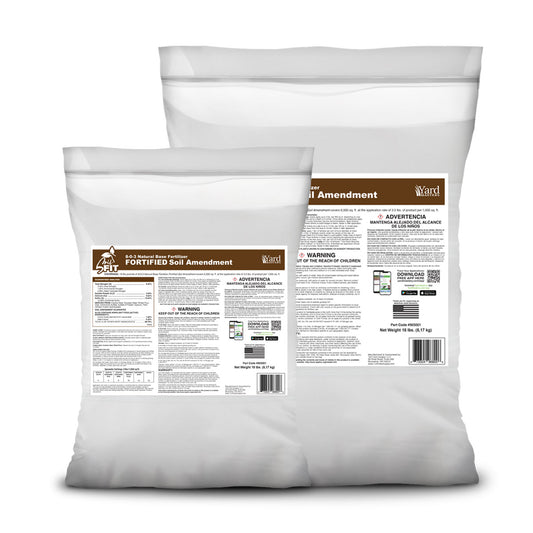
Image for Southern Lawns can be found at most big box stores and in my opinion, it’s the best store bought weed killer available to homeowners. I call it “Image Purple Top” because there are a couple formulations available but it’s the one with the purple cap that I recommend most. In fact, Image for Southern Lawns is the very same weed killer that lawn professionals use, just under a different name (Avenue South Herbicide). Here is an extensive blog post about Post Emergent Weed Control where I wrote about it and a corresponding video (Weed Control with RESULTS // Poor Man's Avenue South Herbicide)
Image for Southern Lawns is labeled for these grass types:
- St Augustine grass (including Floratam)
- Bermuda grass (including hybrid bermuda)
- Zoysia
- Centipede
- Bahia
Here are all the listed weeds that it can control:

Image For Southern Lawns vs RoundUp For Lawns
Last week in our FaceBook group, someone posted up a picture of Image for Southern Lawns and next to it they posted a weed control called RoundUp for Lawns (Southern) and both had the exact same active ingredients listed on the label.
I’ve done quite a bit of content on RoundUp for lawns as well. Here is a video I made just last year about The Best Weed Killer for Homeowners. In that video I show you the RoundUp for Lawns formulation that is made for warm season grasses (St Aug, bermuda, zoysia, etc) but at that time (last year), the only “version” you could get was in the pre-mixed “ready to use” formulation. That’s the one that is a pre-mixed gallon that has a battery operated wand that you use to spray. That version requires no mixing. It’s literally “ready to use” and it works great.

Now it seems that the folks at Monsanto (makers of Roundup for Lawns) have expanded that line and now offer it in a concentrate. I prefer to use concentrates and mix my own weed killer in a battery backpack sprayer because that gives me ultimate control and the ability to spot spray where weeds are sparse, and blanket spray in zones where weed pressure is higher.
Having options is great and so that made me want to dig into the labels of both RoundUp for Lawns and Image for Southern Lawns a little more, and compare use rates, pricing and everything in between. Here’s what I found:
Active Ingredients and Concentrations: Identical

The active ingredients in these products are:
Penoxsulam.............................................0.14%
Sulfentrazone...........................................0.14%
2,4-D, dimethylamine salt........................1.46%
Dicamba, dimethylamine salt ..................0.41%
They are identical.
If you want to know how each of these active ingredients works on weeds, go read this blog post, it’s super interesting! In the meantime, I just want you to focus on the fact that these two brands are literally the same when it comes to the active ingredients and their concentrations.
Use Rates: Different but the Same
As I read through each label I noticed that most of the regulatory language was nearly identical.

But when it comes to use rates, they differ quite a bit. First off, the Image product breaks out specific use rates for each of the warm season grass types. Here is a screenshot showing the use rates for the warm season grasses for Image for Southern Lawns:

I’ve highlighted some important details about this part of the label, let’s dig in (isn’t this fun?!)
For St Augustine grass they break out Floratam specifically, as well as Bitter Blue. I’m going to use that rate for all St Augustine grasses. Why they break it out like that is beyond me. Either way, if you are using Image for Southern Lawns and you have St Augustine grass, you can choose between these rates:
Low Rate:
5.3 oz / gallon / 1,000
High Rate:
8.6 oz / gallon / 1,000
Or you could choose a rate in between those. Here’s the reasoning for giving you variable rate choices:

The last thing I want to point out on this Image for Southern Lawns purple top label are the dilution rates.
Look at St Augustine Floratam up there in the screenshot again. Let’s pretend I’m looking at a lawn that resembles the produce section at Publix (a real salad bar) and I need to get on top of it here quickly before the summer rainy season kicks in. It’s weeds everywhere and I am going to blanket spray. In that case I’m going to ramp up to that high rate of 8.6 oz. Image is giving me that choice - I can mix up a low rate of 5.2 oz or I can cowboy up and hit it with 8.6 oz.

Additionally I can choose the volume of water I want the spray to go down at. I almost always recommend that homeowners using hand held equipment or backpack sprayers, use the rate of 1 gallon of spray mix covers 1,000 sq ft. “That’s the standard” and is what I have always taught.
So in this case, the 8.6 oz of concentrate would be poured into the sprayer and filled up with water to the 1 gallon mark. That 1 gallon of spray mix then covers 1,000 sq ft when sprayed across the lawn. (remember, in this scenario, I’m looking at a salad bar lawn - it needs to be blanket sprayed)
Here is a full video I did on calibrating a 4 gallon backpack sprayer that will give you much more detail on spraying, coverage, walk speeds and recommended spray tips.
Making the standard “1 gallon covers 1,000 sq ft” makes things manageable in walk speed while also maximizing the coverage you get from your limited tank size.
If you have a 4 gallon backpack sprayer, then you can get 4,000 sq ft of coverage from a single fill up. This allows for good coverage at a comfortably paced walking speed.
However, the product label does allow you to put it out at a higher volume which also increases your dilution rate. You could put that same 8.6 oz of concentrate into the sprayer, fill up to the 2 gallon mark and then go out and spray 1,000 sq ft with it.
You’d just walk the lawn twice: north and south, and then east and west. You’re still putting out the exact same amount of concentrate (8.6 oz) across the same size area (1,000 sq ft), you are just using a higher volume of (more) water which allows you to get everything wetter. This is a very good strategy if you need to blanket spray a lawn that has an extremely heavy infestation of weeds. The wetter the weeds, the better the product works. So use the higher volume option.
If you really want to have some fun, check out this video where I talk about higher volume applications using a semi-professional spray rig called “Cart Buddy.”
But there is a downside to this higher volume strategy and that is your limitation on tank size. If you have a 4 gallon back pack sprayer and you need to do this double walking blanket spray using the “2 gallons covers 1,0000 sq ft rate,” then that means your 4 gallon backpack can now only cover 2,000 sq ft. If you have to do this on a 6,000 sq ft lawn you’ll be filling up 3 times! (that becomes annoying real quick!)
The point I’m making here is that the Image for Southern Lawns gives you some choice in application rate and dilution rate. I like that but I wonder if it becomes confusing for some people. Did I just confuse you with all this? Lol
Now let’s look at the RoundUp for Lawns (Southern) and keep in mind, it’s literally got the exact same active ingredients at the same concentrations. Here they are again for review:

Now let’s dig into the label and look at the use rates and dilution rates they recommend.

The RoundUp for Lawns Southern only allows for one rate and it’s the low one. No matter what your warm season grass type, the only rate you are permitted is 5.3 oz / 1,000 sq ft. They also require you to dilute it more as the lowest amount of spray mix allowed is 2 gallons. So overall, the maximum amount of concentrate you can apply at any one time is 5.3oz/1,000 sq ft and the minimum amount of water you can use is 2 gallons.
So if you have a 4 gallon backpack sprayer, then you are only going to get 2,000 sq ft coverage from it max.
I do not know for sure why the folks from RoundUp have limited their label to only the low rate. My guess is that they do not want to chance the higher rates burning the lawn or stunting growth.
It’s also kind of strange why they then have that 2.66 oz / 500 sq ft rate listed separately. If you doubled that then you’d be at 5.3 / 1,000. I just don’t get why they do it that way.
Bottom line though: if you use the RoundUp for Lawns, you are limited to only the low rate.
Price Comparison

I got these at my local Home Depot. They are both 32 oz bottles (1 quart ea).
Let’s compare them apple-to-apply using the low rate of 5.3 oz / 1,000.
Image For Southern Lawns
Size: 32 oz
Cost: $13.98
Rate: 5.3 oz / 1,000 sq ft
Coverage per Bottle: 6,000 sq ft
Cost per 1,000 sq ft: $2.33
RoundUp for Lawns
Size: 32 oz
Cost: $19.97
Rate: 5.3 oz / 1,000 sq ft
Coverage per Bottle: 6,000 sq ft
Cost per 1,000 sq ft: $3.32
Since these two are identical, it only makes sense that you would always buy the Image for Southern Lawns. It’s $7 cheaper for the same stuff that is inside the RoundUp for Lawns Southern.
Again I have no idea why the RoundUp for Lawns Southern would be so much more expensive, but it is.
Only For Dormant Bermuda and Zoysia
One last thing. On both labels you will see these words as remarks referring to bermuda and zoysia:
“This product may be applied to dormant bermudagrass, dormant zoysia grass, etc”
I’ve had people take that to mean “you can only apply this to dormant bermuda/zoysia but not actively growing bermuda/zoysia.”
That is an incorrect interpretation.
What it is telling you is “this product is safe to be used on actively growing turf (including bermuda and zoysia) AND may ALSO be applied to dormant bermuda and dormant zoysia.”
So you can do both.
This is important to know because in most parts of the country where bermuda and zoysia are grown, they will go dormant and have no snow cover. Therefore weeds will invade during this time and it’s ok to use this product to kill those growing weeds when your bermuda or zoysia is dormant. Some examples of weeds you would see in the winter in dormant lawns would be henbit, hairy bittercress and Florida Pusley.
So there you go, a deep dive into two store bought products that are exactly the same, but not really. I hope you have at least learned something here that will help you to make better applications and get better results as you move forward this season!
I’ll see you in the lawn.


